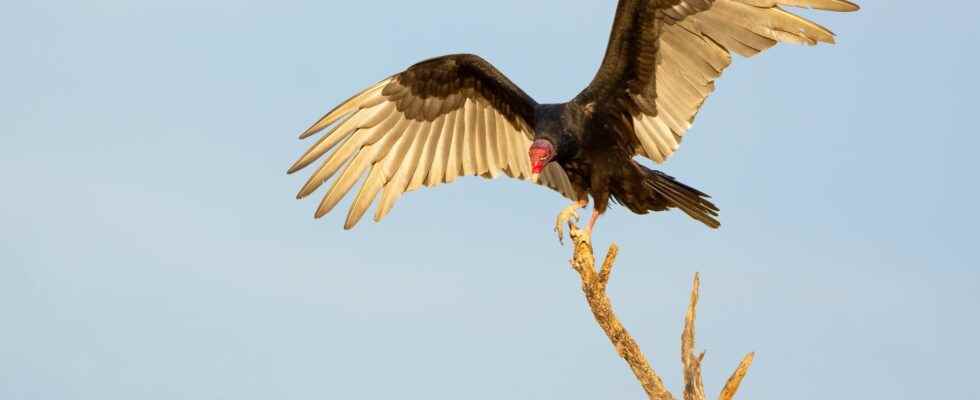Vultures aren’t exactly popular among birds. This is mainly due to the fact that the animals feed exclusively on carrion – in earlier times they were therefore considered the harbingers of death. But in reality, vultures are nature’s flying cleansers. And new research supports this view. The birds ensure lower emissions of greenhouse gases.
Thanks to their excellent eyesight and long flight range, the world’s 22 species of vultures are often the first scavengers to spot and eat a carcass. This behavior is vital for both ecosystems and humans: the birds promote nutrient cycling and reduce the number of pathogens that could otherwise spread from dead to living animals.
Decaying animal carcasses release greenhouse gases, including carbon dioxide and methane. However, the majority of these emissions do not escape into the environment when vultures attack the remains, as the two biodiversity researchers Pablo Plaza and Sergio Lambertucci from Argentina’s Universidad Nacional del Comahue explain in the specialist magazine “Ecosystem Services”. They calculated that a vulture eats between 0.2 and one kilogram of carcass per day, depending on the species. Each kilogram of a decomposing animal releases about 0.86 kilograms into CO2-Equivalents free. In their estimate, the two scientists assume that carcasses simply decompose if they are not eaten by vultures.
However, people often pick up animal carcasses, bury them or compost them, resulting in more emissions than natural decomposition. So if vultures do this work instead, there should be fewer emissions. The potential savings don’t sound particularly lavish, but if you assume an estimated 134 to 140 million vultures worldwide, there is considerable savings potential: several tens of millions of tons of greenhouse gas emissions per year.
